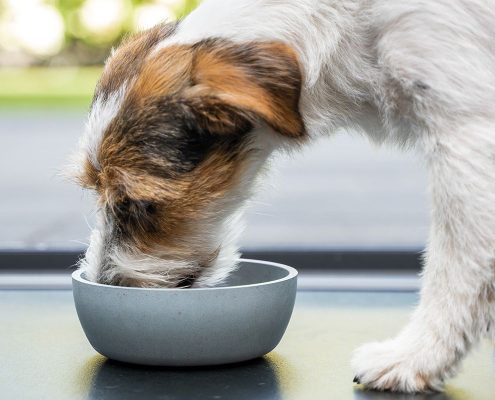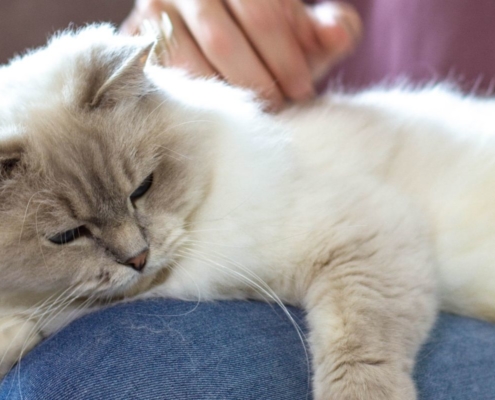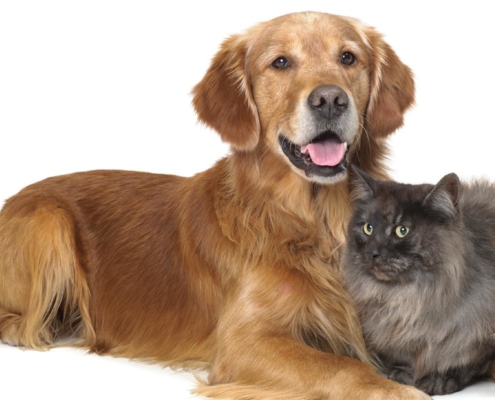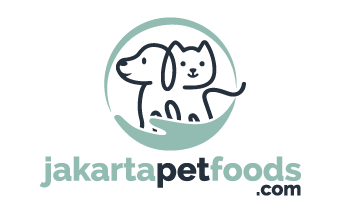Does my cat have a food allergy? |
conditions and causes of food allergy

conditions and causes of food allergy
Is your cat itching? And you have no idea where this itching comes from? Does your cat have problems with its skin and coat? Or does your cat often have diarrhea?
Skin and coat problems can have various causes. Sometimes these are caused by parasites, such as fleas. Skin and coat problems can also be the result of a food allergy or a food hypersensitivity.
A hypersensitivity reaction to a certain ingredient can easily arise. Even if the cat has been fed the same cat food for years. Just suddenly your cat may get itchy or an upset stomach. This is quickly referred to as a food allergy. Yet this is not always the case. One can distinguish between a food allergy and a food intolerance.
When speaking of a food allergy, we are talking about a reaction of the immune system to a foreign substance, also called an allergen. When the immune system responds to a substance, the substance histamine is released. This histamine causes the symptoms of an allergy, such as itching. Examples of allergens are animal proteins and gluten.
Sometimes cats can react to beef protein or milk products. If a cat has an allergy to for instance beef protein or a protein from a certain type of fish, this does not mean that the cat is allergic to all proteins. A solution could be to switch to a diet based on another animal protein, such as lamb, duck or white fish.
In addition to animal proteins, cats can also react sensitively to certain gluten in grains. Gluten is a protein and all cereals such as rice, corn, barley, wheat, oats and rye contain gluten. However, different types of gluten exist, and not all gluten cause a hypersensitivity reaction.
The gluten to which cats may react allergic is for instance found in wheat, but not in corn or rice. This then leads to the same symptoms as with a food allergy. A hypersensitivity to gluten is also called a food anaphylaxis.
In addition to a food allergy, there may also be a food intolerance. Food intolerance shows the same symptoms as a food allergy: skin and coat problems, itching and /or gastrointestinal problems. A food intolerance is therefore difficult to distinguish from a food allergy.
A well-known example of food intolerance is food poisoning. Think of your cat having eaten something that is spoiled or something that contains chocolate, onion or chilies.
Another example is drinking milk. Young animals can still digest milk, but older animals cannot. Therefore, elderly cats can develop diarrhea if they drink milk or are given yogurt.
Because it is often difficult to find out exactly what the cat has a hypersensitivity to, Prins Petfoods has drafted another article on food allergy in cats where you can find out for which ingredient the hypersensitivity is and how it can be treated.
Itching is the most common symptom of food hypersensitivity with cats. Your cat is most bothered by itching on the head, neck and ears.
If you suspect that your cat has a food allergy, read here how you can find out exactly what your cat is allergic to.
 https://jakartapetfoods.com/wp-content/uploads/2021/09/Prins-Indonesia-jakartapetfoods-store-dog-cat-food.jpg 800 1900 Maarten Smit https://jakartapetfoods.com/wp-content/uploads/2020/11/LOGO-jakartapetfoods-website-header.png Maarten Smit2021-09-15 17:33:102021-09-15 18:14:05How to store your dog and cat food
https://jakartapetfoods.com/wp-content/uploads/2021/09/Prins-Indonesia-jakartapetfoods-store-dog-cat-food.jpg 800 1900 Maarten Smit https://jakartapetfoods.com/wp-content/uploads/2020/11/LOGO-jakartapetfoods-website-header.png Maarten Smit2021-09-15 17:33:102021-09-15 18:14:05How to store your dog and cat food https://jakartapetfoods.com/wp-content/uploads/2020/08/Prins-jakartapetfoods-food-allergy-cat.jpg 800 1900 Maarten Smit https://jakartapetfoods.com/wp-content/uploads/2020/11/LOGO-jakartapetfoods-website-header.png Maarten Smit2020-08-31 21:09:202020-08-31 21:28:37Does my cat have a food allergy?
https://jakartapetfoods.com/wp-content/uploads/2020/08/Prins-jakartapetfoods-food-allergy-cat.jpg 800 1900 Maarten Smit https://jakartapetfoods.com/wp-content/uploads/2020/11/LOGO-jakartapetfoods-website-header.png Maarten Smit2020-08-31 21:09:202020-08-31 21:28:37Does my cat have a food allergy? https://jakartapetfoods.com/wp-content/uploads/2020/08/skin-and-coat-header-jakartapetfoods-Prins-Petfoods.jpg 800 1900 Maarten Smit https://jakartapetfoods.com/wp-content/uploads/2020/11/LOGO-jakartapetfoods-website-header.png Maarten Smit2020-08-13 18:08:272020-08-26 23:22:51Coat 101 for your dog and cat
https://jakartapetfoods.com/wp-content/uploads/2020/08/skin-and-coat-header-jakartapetfoods-Prins-Petfoods.jpg 800 1900 Maarten Smit https://jakartapetfoods.com/wp-content/uploads/2020/11/LOGO-jakartapetfoods-website-header.png Maarten Smit2020-08-13 18:08:272020-08-26 23:22:51Coat 101 for your dog and catPasar modern Intermoda
BSD City
Jl Raya Serpong
Tangerang
Banten, 15345 INDONESIA
WA: (0813) 8959 7585
Sales: (0812) 939 565 97

 Dealing with puberty in dogs
Dealing with puberty in dogs